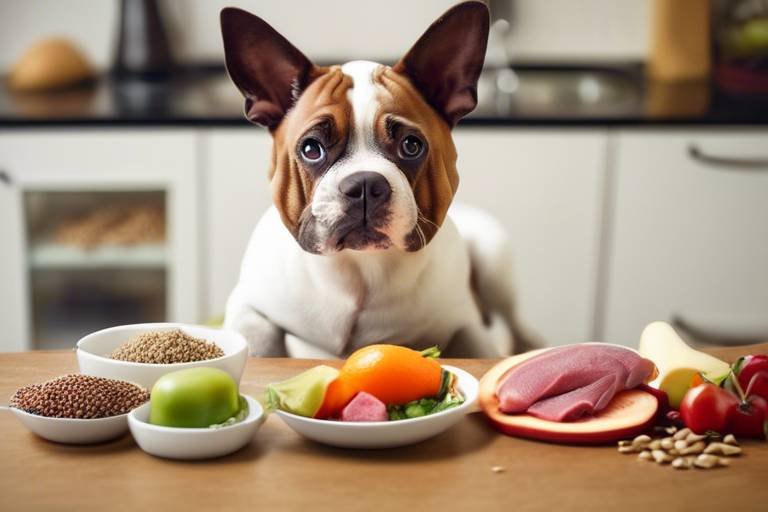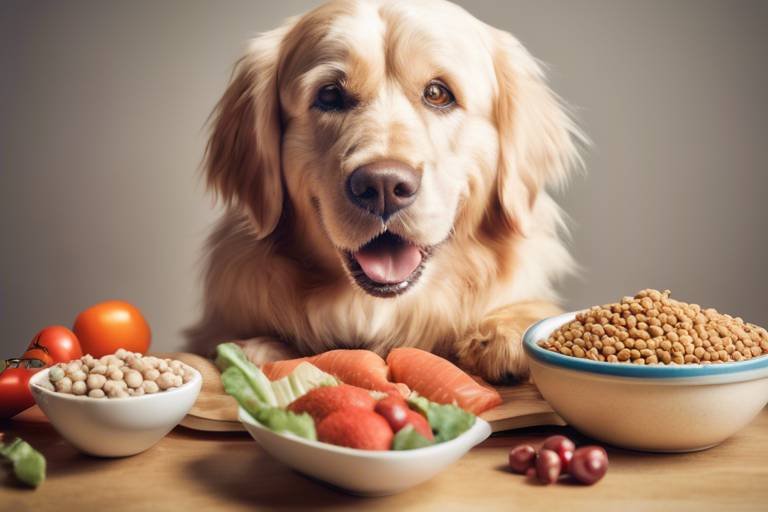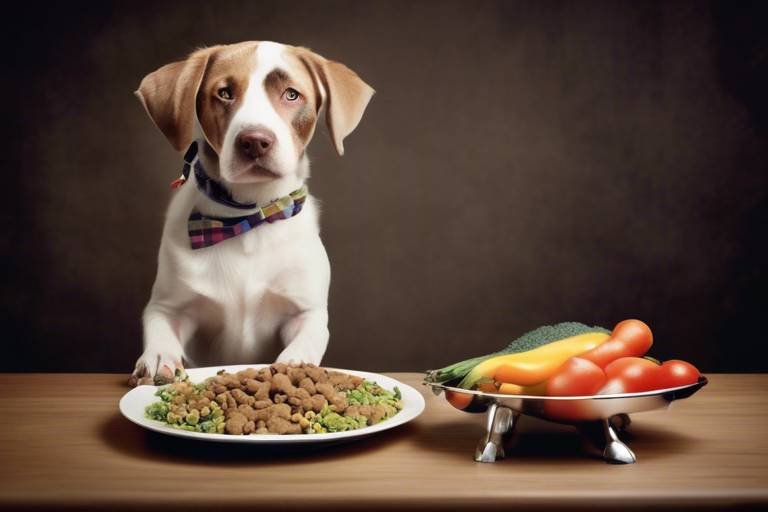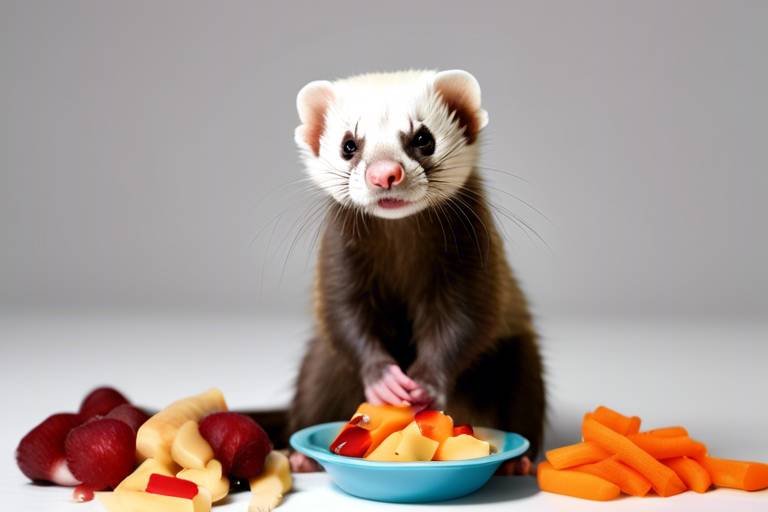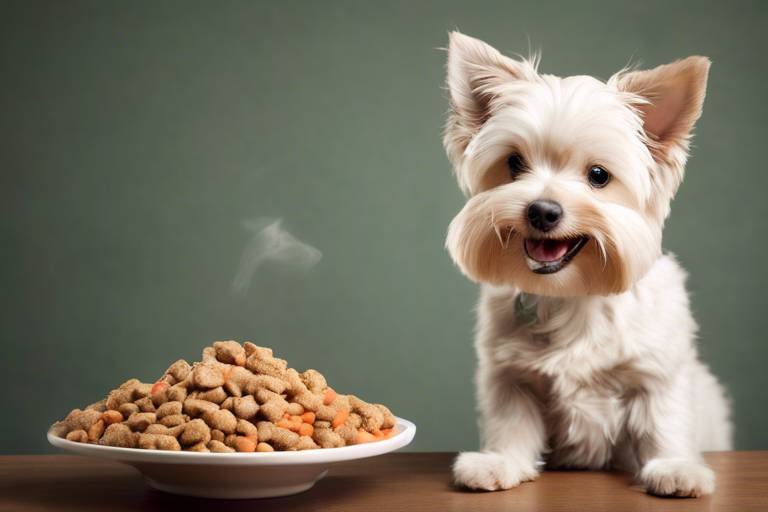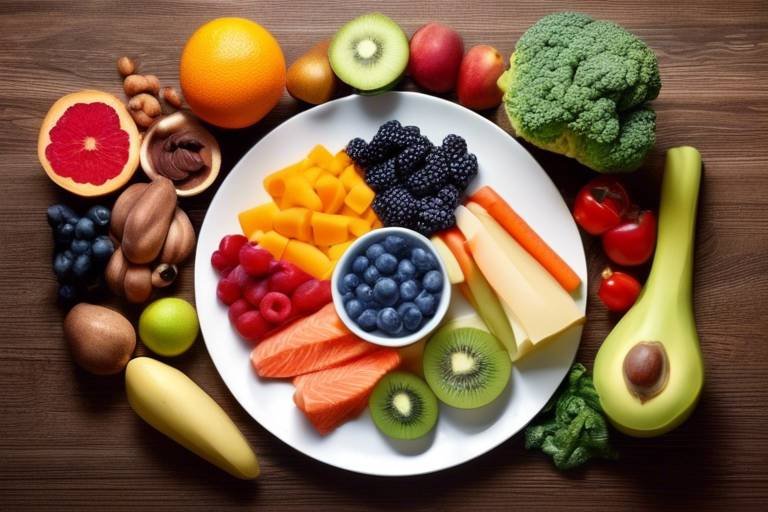How to Feed Your Pet a Balanced Raw Diet
Feeding your pet a balanced raw diet is not just a trend; it's a lifestyle choice that can lead to healthier, happier furry friends. But what does it really mean to feed your pet raw? It’s about understanding their nutritional needs and providing them with the right ingredients that mimic their natural diet. Imagine your pet thriving on a meal plan that is as close to nature as possible! In this article, we’ll dive deep into the essentials of a balanced raw diet, covering everything from nutritional requirements to meal planning, safety considerations, and tips for transitioning your pet to this feeding method.
Understanding the nutritional needs of your pet is crucial for a balanced raw diet. Just like us, pets require a variety of nutrients to stay healthy and active. The essential nutrients include:
- Proteins: These are the building blocks of your pet's body, necessary for growth and maintenance.
- Fats: Healthy fats provide energy and help in the absorption of vitamins.
- Vitamins: Essential for various bodily functions, they help in everything from immune support to skin health.
- Minerals: Important for bone health and metabolic processes.
When planning your pet's meals, it’s essential to ensure that these nutrients are well-represented. A balanced raw diet can lead to improved energy levels, healthier coats, and even better dental health!
Selecting high-quality ingredients is vital for a successful raw diet. Think of it as crafting a masterpiece; the quality of your ingredients will directly affect the outcome. When choosing meats, bones, and supplements, consider the following:
Not all meats are created equal. Opt for fresh, high-quality meats from trusted sources. The best types of meats to include in your pet's raw diet are:
- Chicken
- Beef
- Lamb
- Fish
These protein sources promote health and vitality, ensuring your pet gets the energy they need to play and thrive.
Including organ meats in your pet's diet is essential for providing vital nutrients. Organ meats like liver, kidney, and heart are packed with essential vitamins and minerals that are often missing from muscle meats alone. Think of organ meats as the nutrient-dense superfoods of the pet world!
Understanding which bones are safe for your pet is crucial. Raw, meaty bones are great for dental health and provide calcium and phosphorus. However, avoid cooked bones, as they can splinter and cause serious injuries. Always supervise your pet while they enjoy their bones to ensure their safety.
In some cases, pets may require additional supplements to ensure a balanced diet. Common supplements include fish oil for omega-3 fatty acids, probiotics for gut health, and kelp for trace minerals. Always consult your veterinarian before introducing new supplements to your pet's diet.
Creating a meal plan is key to maintaining a balanced raw diet. Think of it as a roadmap to your pet’s health. Here are some tips to consider:
Portion control is essential for preventing obesity and ensuring proper nutrition. To determine the right portion sizes for your pet, consider their weight, age, and activity level. A general guideline is to feed your pet about 2-3% of their body weight in raw food daily. However, it's always best to consult with your veterinarian for personalized advice.
Offering a variety of proteins and ingredients is important for nutritional balance. Just like we enjoy different meals, pets also benefit from a diverse diet. Rotating ingredients not only keeps mealtime exciting but also ensures that your pet receives a well-rounded diet. Think of it as a colorful palette of flavors and nutrients!
Transitioning your pet to a raw diet requires careful planning. It’s essential to make the switch gradually to avoid digestive upset. Here’s how you can do it:
Start by mixing a small amount of raw food with your pet's current diet. Gradually increase the proportion of raw food over a week or two, monitoring their response closely. This method helps your pet adapt to the new diet without causing gastrointestinal issues.
It’s important to monitor your pet's health during the transition. Watch for signs of digestive upset, such as vomiting or diarrhea. If you notice any concerning symptoms, consult your veterinarian for advice. Remember, every pet is unique, and what works for one may not work for another.
Food safety is paramount when feeding a raw diet. Proper handling, storage, and hygiene practices are essential to ensure your pet's meals are safe and healthy. Here are some tips:
Proper handling of raw ingredients minimizes the risk of contamination. Always wash your hands before and after handling raw meat, and use separate cutting boards for raw and cooked foods. Store raw ingredients in the refrigerator and use them within a few days to maintain freshness.
Maintaining cleanliness in your pet's feeding area is crucial. Clean food bowls, utensils, and surfaces regularly to prevent the growth of harmful bacteria. A clean feeding environment contributes to your pet's overall health and well-being.
1. Can all pets eat a raw diet?
Not all pets may be suited for a raw diet. It's important to consult with your veterinarian, especially if your pet has specific health issues.
2. How do I know if my pet is getting enough nutrients?
Monitoring your pet's overall health, energy levels, and coat condition can help you assess if they are receiving balanced nutrition. Regular check-ups with your veterinarian are also recommended.
3. Is it safe to feed my pet raw bones?
Yes, raw bones can be safe and beneficial for pets. However, always supervise your pet while they are chewing on bones and avoid cooked bones.

Nutritional Requirements
Understanding the nutritional needs of your pet is crucial for a balanced raw diet. Just like us, pets require a variety of nutrients to thrive, and getting the right balance is key to their overall health. A raw diet typically consists of proteins, fats, vitamins, and minerals, each playing a vital role in your pet's well-being. Think of it as a symphony where each nutrient is an instrument; they all need to play in harmony to create a beautiful melody of health.
First up, let's talk about proteins. Proteins are the building blocks of life, essential for growth, repair, and maintenance of body tissues. They provide amino acids, which are crucial for muscle development and immune function. When selecting meats for your pet's raw diet, aim for high-quality sources, such as chicken, beef, or fish. These proteins should ideally make up about 70-80% of your pet's diet.
Next, we have fats. Healthy fats are not just a source of energy; they also support skin health, coat shine, and overall cellular function. Omega-3 and Omega-6 fatty acids, found in fish oil and certain plant oils, are particularly beneficial. In a balanced raw diet, fats should comprise around 10-20% of the total intake. But remember, moderation is key; too much fat can lead to obesity.
Vitamins and minerals are like the spices that enhance the flavor of a dish; they are essential for various biochemical processes in your pet's body. For example, calcium and phosphorus are vital for bone health, while vitamins A, D, E, and K play crucial roles in immune function and vision. It’s important to ensure your pet gets a variety of these nutrients, which can be achieved through a mix of different proteins, organ meats, and supplements.
To give you a clearer picture, here’s a simple breakdown of the essential nutrients your pet needs:
| Nutrient | Function | Sources |
|---|---|---|
| Proteins | Muscle development, tissue repair | Chicken, beef, fish |
| Fats | Energy, skin & coat health | Fish oil, flaxseed oil |
| Vitamins | Immune function, vision | Fruits, vegetables, organ meats |
| Minerals | Bone health, metabolic processes | Bone meal, supplements |
When planning a raw diet, it's vital to ensure that these nutrients are balanced. A well-rounded diet will not only keep your pet healthy but also reduce the risk of various health issues down the line. Always consult with a veterinarian or a pet nutritionist to tailor a diet specific to your furry friend’s needs, as individual requirements can vary based on age, breed, and activity level.
In summary, a balanced raw diet is like a well-composed piece of music; it requires the right combination of ingredients to create harmony. By paying attention to your pet's nutritional requirements, you can ensure they lead a happy, healthy life filled with vitality and energy.
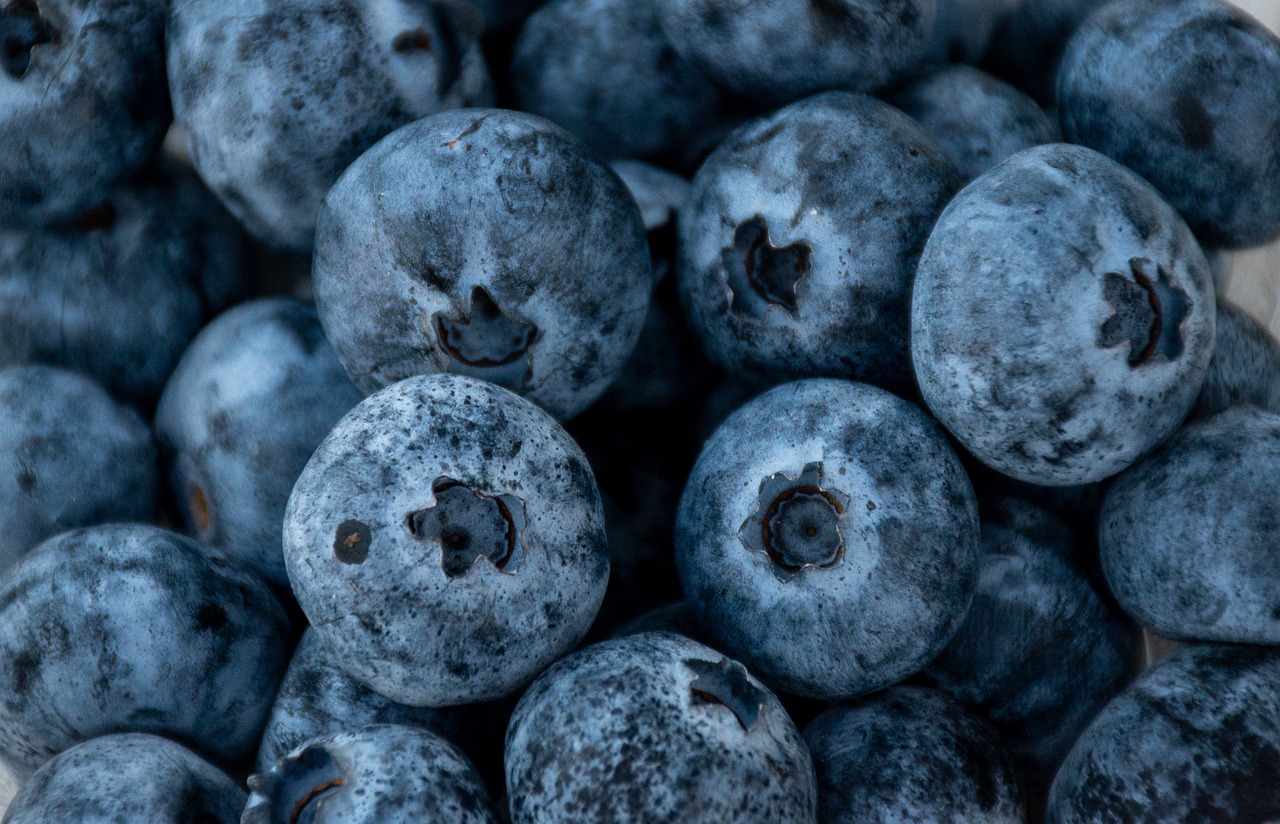
Choosing the Right Ingredients
When it comes to feeding your furry friend a balanced raw diet, is absolutely crucial. Think of it as crafting a delicious and nutritious recipe where every component plays an essential role in your pet’s health. Just like you wouldn’t bake a cake without high-quality flour, you shouldn’t feed your pet anything less than the best. So, what should you be looking for in your ingredients? Let’s break it down.
First and foremost, freshness is key. Always opt for fresh, high-quality meats. The protein sources you select should be free from additives and preservatives. Look for meats that are sourced from reputable suppliers to ensure they are safe and nutritious. It’s also important to consider the source of the meat. Grass-fed beef, free-range chicken, and wild-caught fish are excellent choices that provide your pet with the essential nutrients they need.
Next, let’s talk about organ meats. These are often overlooked but are incredibly nutrient-dense. Think of organ meats as the superfoods of the pet world! They are packed with vitamins and minerals that promote overall health. Incorporating a variety of organ meats such as liver, kidney, and heart can significantly enhance the nutritional profile of your pet’s meals. Aim to make organ meats about 10-15% of your pet's diet for optimal benefits.
Now, we can’t forget about bones. They play a dual role in your pet’s diet: providing essential minerals and aiding in dental health. However, not all bones are safe for consumption. It’s vital to choose the right type of bones—raw bones are generally safe, while cooked bones can splinter and cause serious harm. For example, soft bones like chicken necks or backs are great for smaller pets, while larger dogs can handle beef or lamb bones. Just remember to supervise your pet while they chew to prevent any accidents.
While meats and bones are the foundation of a raw diet, supplements can also play an important role. Depending on your pet’s specific needs, you may want to consider adding supplements such as fish oil for omega-3 fatty acids, or probiotics to support gut health. Always consult with your veterinarian before introducing new supplements to ensure they are appropriate for your pet’s unique health profile.
In summary, choosing the right ingredients for your pet's raw diet is not just about throwing some meat in a bowl; it’s about creating a balanced, nutritious, and safe meal that will keep your furry friend thriving. Remember to prioritize freshness, include a variety of meats and organ meats, select safe bones, and consider supplementation when necessary. By doing so, you’ll set your pet up for a lifetime of health and happiness.
- What types of meat are best for a raw diet? Fresh, high-quality meats such as grass-fed beef, free-range chicken, and wild-caught fish are excellent choices.
- How much organ meat should I include in my pet's diet? Aim for about 10-15% of your pet's diet to come from organ meats.
- Are bones safe for my pet? Raw bones are generally safe, while cooked bones can splinter and pose a risk. Always supervise your pet while they chew.
- Should I add supplements to my pet's raw diet? Depending on your pet's needs, supplements like fish oil or probiotics can be beneficial. Consult your veterinarian for personalized advice.
Meat Selection
When it comes to feeding your pet a balanced raw diet, is a fundamental aspect that can’t be overlooked. Not all meats are created equal, and choosing the right types can significantly impact your pet's health and vitality. The goal is to provide a variety of protein sources that are not only nutritious but also appealing to your furry friend. Think of it as crafting a gourmet meal for your pet—it's all about quality and balance!
First and foremost, you want to focus on high-quality meats. This means opting for fresh, organic, and preferably grass-fed or pasture-raised options. These types of meats are often richer in essential nutrients and free from harmful additives. For example, chicken, beef, lamb, and turkey are excellent protein sources, but the quality of these meats can vary widely based on how they are raised. When selecting meats, consider the following:
- Protein Content: Look for meats that are high in protein to support muscle development and overall health.
- Fat Composition: Balance is key; some fats are beneficial, while others can lead to obesity and health issues.
- Source Variety: Incorporating different types of meat ensures a broader range of nutrients.
In addition to the primary meat sources, don’t forget to include organ meats in your pet's diet. These nutrient-dense foods provide essential vitamins and minerals that are often lacking in muscle meat alone. For instance, liver is packed with vitamin A, iron, and other vital nutrients that can enhance your pet's health. Including organ meats in small amounts can make a big difference in achieving a balanced diet.
Another important consideration is the inclusion of bones in your pet’s raw diet. Bones not only provide essential calcium and phosphorus but also help maintain dental health through chewing. However, it's crucial to choose the right types of bones. Raw bones are generally safe and beneficial, while cooked bones can splinter and pose a serious risk to your pet. Some safe options include:
- Raw chicken necks or wings
- Beef or lamb ribs
- Raw turkey necks
In summary, meat selection is a critical component of a balanced raw diet. By focusing on high-quality protein sources, incorporating organ meats, and selecting safe bones, you can ensure that your pet receives the nutrition they need to thrive. Remember, variety is essential; just like us, pets benefit from a diverse diet that keeps their meals exciting and nutritious!
Q1: Can I feed my pet only one type of meat?
A: While it's possible to feed your pet one type of meat, it's not recommended for long-term feeding. A variety of meats provides a more balanced nutrient profile, which helps support your pet's overall health.
Q2: How often should I include organ meats in my pet's diet?
A: Organ meats should make up about 10% of your pet's diet. Including them a few times a week can help ensure they receive essential nutrients without overwhelming their system.
Q3: Are there any meats I should avoid?
A: Yes, it's best to avoid processed meats, meats with additives, and certain game meats that may carry parasites. Always choose fresh, high-quality sources for your pet's raw diet.
Organ Meats
When it comes to crafting a balanced raw diet for your furry friend, organ meats are often the unsung heroes. These nutrient-dense foods are packed with essential vitamins and minerals that can elevate your pet's health to new heights. Think of organ meats as the superfoods of the animal kingdom—rich in nutrients that are vital for your pet's well-being.
Including organ meats in your pet's raw diet is not just a recommendation; it's a necessity. These meats contain high levels of vitamin A, iron, and various B vitamins that support everything from vision to energy metabolism. For instance, liver is particularly renowned for its richness in vitamin A, which is crucial for maintaining healthy skin, eyes, and immune function. But the benefits don’t stop there—other organ meats like kidneys and hearts also play a significant role in providing a well-rounded nutritional profile.
Here’s a quick overview of some key organ meats you might consider:
- Liver: High in vitamin A and essential fatty acids.
- Kidneys: Packed with B vitamins and minerals like phosphorus.
- Heart: A great source of taurine, which is vital for heart health.
One of the best ways to incorporate organ meats into your pet's diet is to aim for a balance. A general guideline is to include about 10% of organ meats in your pet's total diet. This means that if you're feeding your pet a total of 2 pounds of raw food per week, around 0.2 pounds should come from organ meats. However, it's essential to remember that not all organ meats are created equal. Always opt for fresh, high-quality sources to maximize the health benefits.
Moreover, transitioning your pet to include organ meats should be done gradually. Start with small amounts and observe how your pet reacts. Some pets may experience digestive upset if introduced too quickly, so patience is key. As you incorporate these nutrient-packed foods, you’ll likely notice an increase in your pet’s energy levels, coat shine, and overall vitality.
In conclusion, organ meats are a powerhouse of nutrition that can significantly enhance your pet's raw diet. By carefully selecting and introducing these nutrient-rich foods, you’re not only providing your pet with a delicious meal but also setting them up for a healthier, happier life.
Q1: How often should I feed organ meats to my pet?
A: It's recommended to include organ meats as about 10% of your pet's total diet. Adjust the frequency based on your pet's specific needs and preferences.
Q2: Can I feed my pet only organ meats?
A: No, organ meats should complement a balanced diet that includes muscle meats, bones, and other ingredients to ensure your pet receives all necessary nutrients.
Q3: Are there any organ meats I should avoid?
A: While most organ meats are beneficial, avoid feeding excessively large amounts of liver, as too much vitamin A can be harmful. Always consult your veterinarian for personalized advice.
Bone Types
When it comes to feeding your pet a raw diet, understanding the types of bones that are safe and beneficial is crucial. Not all bones are created equal, and selecting the right ones can make a significant difference in your pet's dental health and nutritional intake. Generally, bones can be categorized into two main types: raw bones and cooked bones. It's essential to note that while raw bones can provide various health benefits, cooked bones should be avoided as they can splinter and pose serious health risks.
Raw bones are typically softer and more pliable than their cooked counterparts, making them safer for pets to chew. They not only help in maintaining dental health by reducing plaque and tartar buildup but also provide essential nutrients. For instance, bones that are high in marrow can be an excellent source of fats and minerals. Some of the best options for raw bones include:
- Meaty bones: These are bones that still have meat attached to them, providing both protein and calcium.
- Knuckle bones: Great for chewing, they are rich in cartilage and help with joint health.
- Raw chicken necks and wings: These are softer and easier for smaller pets to manage while still offering nutritional benefits.
On the other hand, cooked bones can be dangerous. When bones are cooked, they become brittle and can easily splinter, leading to potential choking hazards or serious injuries to your pet's digestive tract. It's a common misconception that cooking makes bones safer; in reality, it does the opposite. Therefore, it's crucial to avoid giving your pet any cooked bones, regardless of the type of meat.
Understanding the role of bones in your pet's diet goes beyond just safety; it also encompasses their nutritional benefits. Bones provide vital minerals such as calcium and phosphorus, which are essential for strong bones and teeth. Additionally, chewing on raw bones can help keep your pet's gums healthy and strong, reducing the risk of periodontal disease.
In summary, when selecting bones for your pet's raw diet, always opt for raw, meaty bones and steer clear of any cooked bones. By doing so, you can ensure that your furry friend enjoys the health benefits while minimizing any risks associated with bone consumption.
Q: Can I give my pet any type of bone?
A: No, you should only give your pet raw bones. Cooked bones can splinter and cause serious injuries.
Q: How often can I give my pet bones?
A: It’s generally safe to offer bones a few times a week, but always monitor your pet while they chew.
Q: What should I do if my pet swallows a large piece of bone?
A: If your pet swallows a large piece of bone, contact your veterinarian immediately for advice.
Q: Are there any bones that should be avoided?
A: Yes, avoid small bones that can be swallowed whole, as well as any cooked bones.
Supplementation
When it comes to feeding your pet a balanced raw diet, can play a pivotal role in ensuring they receive all the essential nutrients they need for optimal health. While a well-planned raw diet can provide most of the necessary nutrients, certain factors such as age, health conditions, and activity levels may necessitate additional supplements. Think of supplements as the cherry on top of a well-structured meal; they can enhance your pet's overall well-being and fill in any nutritional gaps.
There are several types of supplements you might consider adding to your pet's raw diet. Omega-3 fatty acids, for example, are crucial for maintaining a healthy coat and skin, while also supporting joint health. These can be found in fish oil or flaxseed oil. Another important supplement is probiotics, which can aid in digestion and promote a healthy gut flora. This is especially beneficial if your pet has a sensitive stomach or has recently transitioned to a raw diet.
Additionally, you might want to consider vitamin E and vitamin D supplements. Vitamin E acts as a powerful antioxidant, helping to combat oxidative stress, while vitamin D is essential for calcium absorption and bone health. If you're unsure about which supplements to choose, consulting with a veterinarian can provide valuable insights tailored to your pet's specific needs.
| Supplement Type | Benefits | Sources |
|---|---|---|
| Omega-3 Fatty Acids | Supports skin health, reduces inflammation, and improves joint function. | Fish oil, flaxseed oil |
| Probiotics | Aids digestion and promotes a healthy gut. | Yogurt, specialized pet probiotic supplements |
| Vitamin E | Acts as an antioxidant, supports immune function. | Vegetable oils, nuts, and seeds |
| Vitamin D | Essential for calcium absorption and bone health. | Fish liver oil, fortified foods |
In summary, while a balanced raw diet can provide a wealth of nutrients, it’s essential to evaluate your pet's individual needs and consider supplementation where necessary. By doing so, you can ensure that your furry friend remains healthy, happy, and full of life. Always remember that the key to a successful raw diet is balance, and supplements can help achieve that perfect equilibrium.
- What are the signs that my pet needs supplementation? If you notice changes in your pet's coat, energy levels, or digestive health, it may be time to consider supplements.
- Can I give my pet human supplements? It's best to consult with a veterinarian before giving your pet any human supplements, as some may not be safe for animals.
- How do I know which supplements to choose? Speak with your veterinarian to determine the best supplements for your pet based on their diet and health status.
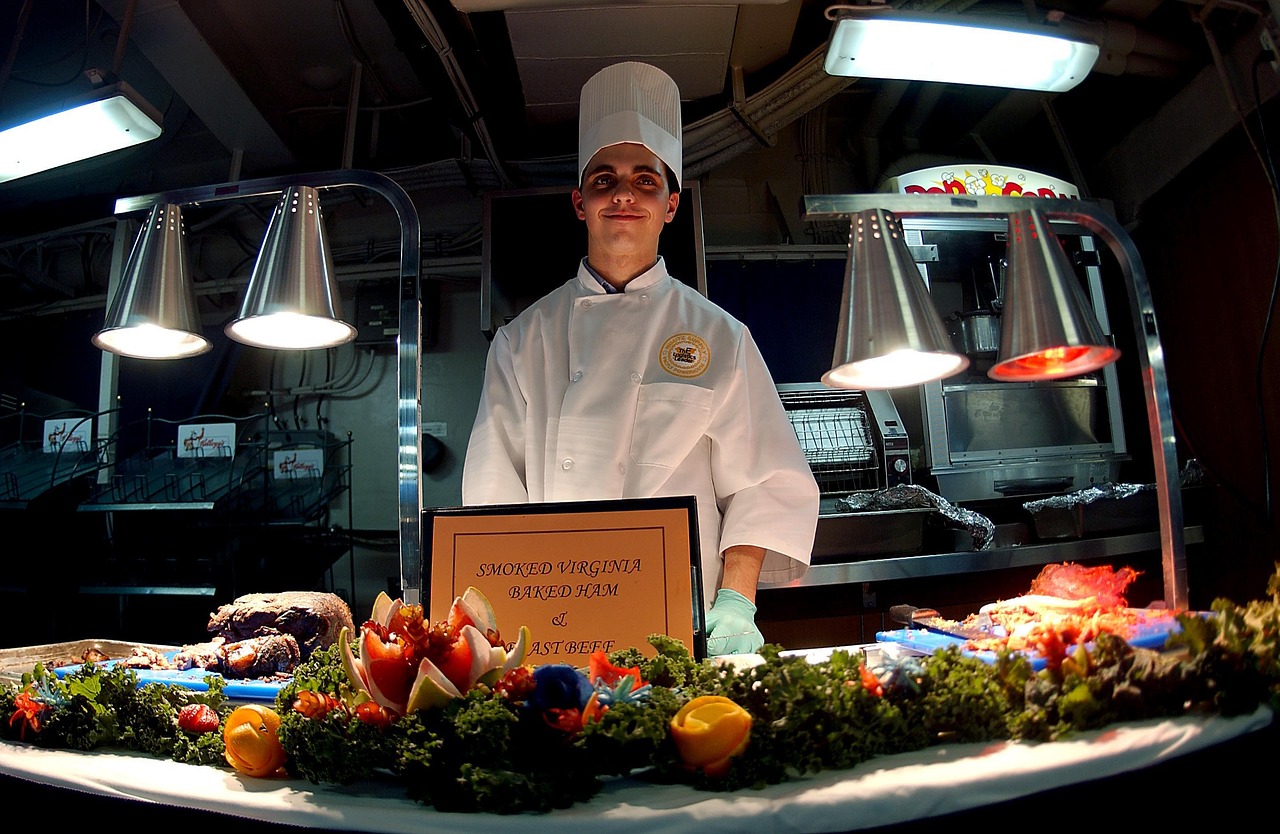
Meal Planning
Creating a successful meal plan for your pet is not just about throwing some raw meat in a bowl and calling it a day. It’s an art, a science, and a commitment to ensuring that your furry friend receives all the nutrients they need to thrive. Think of meal planning as crafting a masterpiece; every ingredient plays a role in the final picture of your pet's health. The key is to balance the right ingredients, portion sizes, and feeding frequency, all while keeping your pet’s preferences and needs in mind.
First off, let’s talk about portion sizes. It’s essential to determine how much food your pet requires based on their weight, age, and activity level. For example, a highly active dog will need more food compared to a couch potato. As a general guideline, you can follow this formula:
| Pet Weight (lbs) | Daily Food Amount (raw food % of body weight) |
|---|---|
| 5-10 | 8-10% |
| 10-20 | 5-8% |
| 20-50 | 3-5% |
| 50+ | 2-3% |
Once you have a good idea of portion sizes, it’s time to think about feeding frequency. Puppies and kittens usually require more frequent meals—up to three times a day—while adult pets can generally be fed once or twice daily. Consistency is key, so try to stick to a schedule. Your pet will appreciate the routine, and it’ll help with digestion.
Now, let’s not forget about variety. Just like us, pets can get bored with the same old meals. Rotating different types of proteins and ingredients not only keeps mealtime exciting but also ensures a well-rounded diet. You might consider including:
- Chicken, turkey, or beef for protein
- Fish for omega-3 fatty acids
- Vegetables like carrots and spinach for vitamins
- Fruits such as blueberries and apples for antioxidants
When planning your pet's meals, think of it as a colorful palette. Each ingredient adds a different hue to their nutritional profile. For instance, organ meats are a powerhouse of vitamins and minerals, while bones can provide crucial calcium and phosphorus. Incorporating these elements ensures your pet receives a balanced diet that supports their health.
Lastly, don’t forget to keep track of how your pet responds to their meals. Monitoring their energy levels, coat condition, and overall health will give you valuable insights into whether your meal plan is working. If you notice any changes—like weight gain, lethargy, or digestive issues—it might be time to reassess your approach.
In conclusion, meal planning for your pet is about more than just nutrition; it’s about creating a delightful experience for them. By understanding portion sizes, feeding frequency, and the importance of variety, you can ensure that your pet not only eats well but also enjoys their meals. After all, a happy pet is a healthy pet!
1. How do I know if my pet is getting enough nutrients?
Monitor their weight, energy levels, and overall health. Consulting with a veterinarian can also help you assess their nutritional needs.
2. Can I mix raw food with kibble?
It’s generally not recommended to mix raw food with kibble due to differences in digestion times. Choose one method and stick with it.
3. How do I store raw food safely?
Store raw food in the refrigerator or freezer, and always practice good hygiene when handling it to prevent contamination.
4. What should I do if my pet refuses to eat raw food?
Try gradually introducing raw food by mixing it with their current diet or warming it slightly to enhance the aroma.
Portion Control
When it comes to feeding your pet a raw diet, is not just a suggestion; it's a necessity. Think of it as the foundation of a well-balanced meal plan. Just like you wouldn't want to overindulge at a buffet, your furry friend also needs the right amount of food to maintain their health and vitality. But how do you determine the perfect portion for your pet?
The first step in mastering portion control is understanding your pet's unique needs. Factors such as age, weight, activity level, and metabolism all play a crucial role in how much food your pet should consume. For instance, a lively puppy will require more calories than a sedentary senior dog. To make it easier, many pet owners turn to a simple formula: feed your pet approximately 2-3% of their body weight daily in raw food. For example, if your dog weighs 50 pounds, they should be getting around 1 to 1.5 pounds of raw food each day.
However, this isn't a one-size-fits-all approach. You might find that some pets thrive on slightly more or less food than the general guideline suggests. The key is to monitor your pet's weight and adjust the portions accordingly. If your pet is gaining weight, it's time to cut back a bit. Conversely, if they seem to be losing weight or are always hungry, you might need to increase their portions.
Another important aspect of portion control is the frequency of feeding. Many pet owners opt for two meals per day, which can help regulate their pet's appetite and energy levels. This is particularly beneficial for dogs, as it mimics their natural hunting instincts. Cats, on the other hand, might prefer smaller, more frequent meals throughout the day. You can also consider using a feeding schedule to help maintain consistency.
To assist you in determining the right portion sizes, here's a simple table that outlines the recommended daily food intake based on your pet's weight:
| Pet Weight (lbs) | Daily Food Intake (lbs) |
|---|---|
| 5 | 0.1 - 0.15 |
| 10 | 0.2 - 0.3 |
| 20 | 0.4 - 0.6 |
| 50 | 1 - 1.5 |
| 100 | 2 - 3 |
In conclusion, mastering portion control is essential for your pet’s health and happiness. By taking into account their individual needs and adjusting their food intake accordingly, you can help ensure they lead a healthy, active life. Remember, it's all about finding that sweet spot where your pet feels satisfied and is at an ideal weight. So, keep an eye on those portions, and your pet will thank you for it!
- How do I know if I'm feeding my pet the right amount? Monitor their weight and adjust portions as needed. A healthy pet should have a visible waist and ribs that can be felt but not seen.
- Can I feed my pet once a day? While some pets can thrive on one meal a day, splitting their food into two meals can help regulate their energy and appetite.
- What should I do if my pet is overweight? Reduce their portion size and consult with your veterinarian for a tailored weight loss plan.
Variety in Diet
When it comes to feeding your pet a raw diet, variety is not just the spice of life—it's a key ingredient for their health and well-being. Just like humans, pets thrive on a diverse range of nutrients that come from different food sources. Imagine if you had to eat the same meal every day; it would get boring, right? The same goes for our furry friends. A monotonous diet can lead to nutritional deficiencies and even health issues. So, how do you ensure your pet enjoys a well-rounded, balanced raw diet?
First and foremost, rotating proteins is essential. Different meats provide different amino acids, vitamins, and minerals. For instance, chicken is rich in certain nutrients, while beef offers others. By incorporating a variety of meats, you can cover all bases. Here’s a quick overview of some protein sources you can include:
| Protein Source | Key Nutrients |
|---|---|
| Chicken | Protein, Niacin, Phosphorus |
| Beef | Protein, Iron, Zinc |
| Turkey | Protein, Selenium, Vitamin B6 |
| Lamb | Protein, Vitamin B12, Iron |
Additionally, don't forget about incorporating fish into the mix! Fish is an excellent source of omega-3 fatty acids, which are great for your pet's skin and coat health. Think of it as a little splash of the ocean in their bowl! You can also consider adding eggs—they're packed with protein and other essential nutrients. Just make sure to cook them to avoid any risk of salmonella.
Furthermore, including a variety of fruits and vegetables in your pet's diet can provide valuable vitamins and fiber. Think of these as nature's multivitamins! Some safe options include:
- Carrots
- Blueberries
- Spinach
- Pumpkin
However, always research which fruits and vegetables are safe for your pet, as some can be harmful. For example, grapes and onions should always be avoided. The key is to keep things interesting while ensuring your pet gets all the nutrients they need.
Finally, remember that variety doesn’t mean chaos. Consistency is also crucial in your pet's diet. Aim for a balanced approach where you rotate different proteins and ingredients regularly, but keep some constants to avoid upsetting their digestive system. Think of it as a well-composed symphony—each ingredient plays its part, creating a harmonious blend that supports your pet's health.
In conclusion, offering a variety in your pet's raw diet is not just beneficial; it's essential for their overall health and happiness. So, get creative in the kitchen, explore different protein sources, and watch your pet thrive!
Q: How often should I change the protein source in my pet's diet?
A: It's generally a good idea to rotate protein sources every week or two, but always observe how your pet reacts to new foods.
Q: Can I mix different types of meat in one meal?
A: Yes, mixing different meats can provide a broader range of nutrients, but introduce new proteins gradually to avoid digestive upset.
Q: Are there any fruits or vegetables I should avoid?
A: Yes, some fruits and vegetables like grapes, raisins, and onions can be toxic to pets, so always check before incorporating new foods.

Transitioning to Raw Diet
Making the switch to a raw diet for your pet can feel like a daunting task, but with the right approach, it can be a smooth and rewarding experience. Just like humans, pets can be creatures of habit, and a sudden change in their diet can lead to digestive issues. To ensure a successful transition, it's essential to take it slow and steady. Think of it like teaching a child to ride a bike; you wouldn’t just push them off and hope for the best, right? You’d guide them, support them, and let them find their balance. The same principle applies when transitioning your furry friend to a new way of eating.
The first step in this journey is to gradually introduce raw food into your pet's existing diet. Start by mixing a small amount of raw food with their regular kibble. This could be as simple as adding a tablespoon of raw meat or organ to their bowl. Over the course of a week or two, you can slowly increase the proportion of raw food while decreasing the kibble. This gradual introduction allows your pet's digestive system to adjust without causing any upset. Monitor their reaction closely; if you notice any signs of gastrointestinal distress, such as vomiting or diarrhea, it may be wise to slow down and give them more time to adapt.
While you're transitioning, keep an eye on your pet's overall health. You want to ensure they're not only adjusting well but thriving on their new diet. Look for signs of increased energy, a shiny coat, and healthy stools. If you notice any concerning symptoms, don’t hesitate to consult your veterinarian. They can provide valuable insights and help you determine if any adjustments are needed in your approach.
To help you visualize the transition process, here’s a simple table that outlines a sample transition plan:
| Week | Raw Food Percentage | Kibble Percentage |
|---|---|---|
| 1 | 10% | 90% |
| 2 | 25% | 75% |
| 3 | 50% | 50% |
| 4 | 75% | 25% |
| 5+ | 100% | 0% |
It's important to note that every pet is unique, and some may transition more quickly or slowly than others. Be patient and flexible, and always prioritize your pet's comfort and health. Remember, this is not just about changing their food; it’s about enhancing their overall well-being.
As you embark on this journey, don’t forget to celebrate the small victories! Perhaps your pet tries a new protein for the first time or shows enthusiasm at mealtime. These moments are not just milestones; they’re indicators that you’re on the right track. With time, your pet will not only adapt but may also thrive on their new raw diet, enjoying a healthier and happier life.
Q: Can I feed my pet raw vegetables?
A: While some pets may enjoy raw vegetables, they should not make up a significant portion of the diet. Focus primarily on meat, bones, and organ meats for balanced nutrition.
Q: How do I know if my pet is adjusting well?
A: Look for signs of good health such as increased energy, a shiny coat, and healthy stools. If you notice any digestive issues, consult your veterinarian.
Q: Is it safe to feed my pet raw bones?
A: Yes, but it's essential to choose the right types of bones. Avoid cooked bones and stick to raw, meaty bones that are appropriate for your pet's size and chewing habits.
Q: Should I consult my veterinarian before switching to a raw diet?
A: Absolutely! It's always a good idea to discuss any significant dietary changes with your veterinarian, who can provide tailored advice based on your pet's specific health needs.
Gradual Introduction
Transitioning your pet to a raw diet is a journey that requires patience and attention. Just like humans, pets can experience digestive changes when their diet shifts dramatically. A is crucial for helping your furry friend adapt without experiencing any gastrointestinal distress. Think of it as easing your pet into a new routine, much like how you might start a new exercise program. You wouldn't jump straight into a marathon, right? The same principle applies to dietary changes.
To start, you can begin by incorporating small amounts of raw food into your pet's current diet. For example, if your pet usually eats dry kibble, you might want to replace a small portion of their kibble with raw meat. Here's a simple guideline on how to approach this:
| Day | Kibble Amount | Raw Food Amount |
|---|---|---|
| 1-3 | 75% | 25% |
| 4-6 | 50% | 50% |
| 7-10 | 25% | 75% |
| 11+ | 0% | 100% |
This gradual increase in raw food will allow your pet's digestive system to adjust to the new diet. Keep a close eye on your pet during this transition period. Are they experiencing any signs of discomfort? Look for symptoms like vomiting, diarrhea, or a decrease in appetite. If you notice any of these issues, it may be a good idea to slow down the transition process. Remember, every pet is unique, and some may take longer to adjust than others.
Additionally, it's important to monitor your pet's energy levels and overall demeanor. A happy, healthy pet should show signs of vitality and enthusiasm. If your pet seems lethargic or unwell, consult your veterinarian for personalized guidance. They can provide valuable insights into your pet's specific needs and help you determine the best course of action.
Lastly, consider keeping a food diary during this transition. Documenting what your pet eats and any reactions they have can provide useful information for both you and your vet. This way, you can track progress and make informed decisions about their diet moving forward. Just like we all have our own preferences and tolerances, your pet will have theirs too. So, be patient, and let them adjust at their own pace!
- How long should the gradual introduction take? Ideally, the transition should take about 10 to 14 days, but this can vary based on your pet's individual needs.
- What if my pet refuses to eat raw food? If your pet is hesitant, try mixing it with their favorite foods or warming it slightly to enhance the aroma.
- Can I mix raw food with kibble? While it's best to avoid mixing diets, initially doing so can help with the transition. However, eventually, it's recommended to feed them separately.
Monitoring Health
When transitioning your beloved pet to a raw diet, monitoring their health becomes a vital part of the journey. Just like humans, pets can experience adjustments as their bodies adapt to new food sources. So, what should you be on the lookout for during this transition? Well, it’s essential to keep an eye on various health indicators that can signal how well your pet is adjusting to their new meals.
First and foremost, watch for any signs of digestive upset. This can include diarrhea, vomiting, or even changes in stool consistency. These symptoms can occur as your pet's digestive system adjusts to the raw ingredients. If you notice any of these issues, it’s crucial to take a step back and consider if you’re introducing raw food too quickly. A gradual introduction is key to allowing your pet's digestive system to adapt without overwhelming it.
Additionally, keep an eye on your pet's energy levels. A raw diet can be energizing for many pets, but if you notice a significant drop in energy or lethargy, it could be a sign that something isn’t right. This could be due to either the quality of the food or the balance of nutrients provided. If your pet seems unusually tired, it might be time to consult with your veterinarian to ensure they are receiving adequate nutrition.
Another important aspect to monitor is your pet's skin and coat condition. A shiny, healthy coat is often a reflection of a balanced diet. If you observe dullness, excessive shedding, or skin irritations, it may indicate that your pet is not getting the essential fatty acids and nutrients they need. In such cases, you may want to consider adding supplements like fish oil or consulting your vet for specific recommendations.
Finally, regular veterinary check-ups are crucial during this transition. Your vet can provide valuable insights into your pet's health and help you make necessary adjustments to their diet. It’s also a good idea to keep a journal of your pet's health changes, including their weight, energy levels, and any digestive issues. This can help both you and your veterinarian identify patterns and make informed decisions about your pet's diet.
In summary, monitoring your pet's health during the transition to a raw diet is not just about observing physical changes; it’s about ensuring their overall well-being. By being proactive and attentive, you can help your pet thrive on their new diet. Remember, if you ever feel uncertain, don’t hesitate to reach out to your veterinarian for guidance.
- How long should I monitor my pet after transitioning to a raw diet? It's advisable to monitor your pet for at least a few weeks after the transition to ensure they are adjusting well.
- What should I do if my pet has digestive issues? If your pet experiences diarrhea or vomiting, consider slowing down the introduction of raw foods and consult your veterinarian.
- How can I tell if my pet is getting enough nutrients? Regular check-ups with your vet can help assess your pet's health and ensure they are receiving a balanced diet.
- Is it normal for my pet to have changes in energy levels? Some fluctuation in energy levels can be normal during the transition, but significant lethargy should be addressed with your vet.

Safety Considerations
When it comes to feeding your pet a raw diet, food safety is not just a suggestion; it's a necessity. Just like you wouldn’t want to eat spoiled food, your furry friend deserves the same level of care. Proper handling, storage, and hygiene practices are essential in ensuring that your pet's meals are not only nutritious but also safe from harmful bacteria and pathogens. The last thing you want is for your beloved companion to suffer from foodborne illnesses. Let's dive into the key safety considerations you need to keep in mind.
First off, handling raw ingredients properly is crucial. Always wash your hands before and after handling any raw meat or organs. This simple act can drastically reduce the risk of cross-contamination. Additionally, ensure that all surfaces and utensils used in meal preparation are thoroughly cleaned. Using separate cutting boards for raw ingredients and other foods can also help prevent any unwanted bacteria from hitching a ride to your pet's plate. Remember, cleanliness is next to pet-ness!
When it comes to storing raw ingredients, temperature control is your best friend. Raw meats should be kept in the refrigerator at temperatures below 40°F (4°C) and should not be left out for more than two hours. If you’re not planning to use the meat right away, freezing it is an excellent option. Just be sure to thaw it safely in the fridge rather than leaving it out on the countertop. This keeps the meat fresh and safe for your pet to enjoy.
Another important aspect of safety is maintaining hygiene practices in your pet's feeding area. After your pet finishes their meal, promptly clean their bowls and feeding area to avoid attracting pests or creating a breeding ground for bacteria. It’s also advisable to wash your pet’s dishes in hot, soapy water or run them through the dishwasher to ensure they are thoroughly sanitized.
In addition to general safety practices, you should also be aware of specific risks associated with raw feeding. For example, certain types of bones can splinter and cause serious internal injuries. Always opt for raw bones that are appropriate for your pet’s size and chewing habits. Avoid cooked bones, as they can become brittle and pose a choking hazard. If you're ever in doubt, consulting with a veterinarian can provide valuable insights into safe options for your pet.
Lastly, keep an eye out for any signs of digestive upset in your pet, especially during the transition to a raw diet. If your pet experiences symptoms like vomiting, diarrhea, or lethargy, it’s essential to consult your vet immediately. Your pet’s health and safety should always be your top priority.
In summary, feeding your pet a raw diet can be a rewarding experience, but it comes with its own set of responsibilities. By following proper handling, storage, and hygiene practices, you can ensure that your pet enjoys a safe and healthy raw diet.
- Is it safe to handle raw meat for my pet? Yes, as long as you follow proper hygiene practices, such as washing your hands and cleaning surfaces.
- How should I store raw meat for my pet? Store raw meat in the refrigerator below 40°F (4°C) or freeze it if not used immediately.
- What should I do if my pet shows signs of digestive upset? Consult your veterinarian for advice and potential dietary adjustments.
- Are there any bones I should avoid? Yes, avoid cooked bones and opt for raw bones that are appropriate for your pet's size.
Handling Raw Ingredients
When it comes to feeding your pet a raw diet, food safety is not just a suggestion; it's a necessity. Handling raw ingredients properly can prevent contamination and keep your furry friend healthy. Start by ensuring that you have a clean workspace. This means wiping down countertops, using clean cutting boards, and having all your utensils ready before you start preparing your pet's meal. Just like you wouldn’t want to eat off a dirty plate, your pet deserves the same level of cleanliness!
Next, always wash your hands thoroughly before and after handling raw meat. This simple act can drastically reduce the risk of spreading harmful bacteria. It's also essential to keep raw ingredients separate from other foods to avoid cross-contamination. For instance, if you’re slicing up chicken for your pet, don’t let that same cutting board touch your vegetables or fruits intended for human consumption.
Storage is another critical aspect of handling raw ingredients. Store raw meat in the coldest part of your refrigerator, ideally below 40°F (4°C), and make sure to use airtight containers to prevent any leakage that could contaminate other foods. If you're not planning to use the meat within a couple of days, consider freezing it. Thaw it in the refrigerator, not at room temperature, to minimize bacterial growth.
Additionally, when preparing your pet's meals, be mindful of the expiration dates on all ingredients. Consuming expired meat can lead to serious health issues for your pet. Always trust your senses; if something smells off or looks questionable, it’s better to err on the side of caution and discard it.
Here’s a quick reference table to help you remember some key points about handling raw ingredients:
| Practice | Description |
|---|---|
| Wash Hands | Always wash hands before and after handling raw ingredients. |
| Clean Workspace | Ensure your preparation area is clean and sanitized. |
| Separate Ingredients | Keep raw meat separate from other foods to avoid cross-contamination. |
| Proper Storage | Store raw meat in airtight containers and refrigerate or freeze as needed. |
| Check Expiry Dates | Always check and adhere to the expiration dates of all ingredients. |
By following these handling guidelines, you can ensure that your pet's raw meals are not only nutritious but also safe. Remember, a little diligence in the kitchen goes a long way in keeping your beloved pet healthy and happy!
- Can I use regular kitchen utensils for raw pet food? Yes, but make sure to clean them thoroughly before using them for human food.
- How long can raw ingredients be stored in the fridge? It's best to use raw meat within 1-2 days of purchase.
- Is it safe to feed my pet raw meat from the grocery store? Yes, as long as you handle it safely and check for freshness.
Hygiene Practices
When it comes to feeding your pet a raw diet, are not just important; they are absolutely essential. Raw ingredients can harbor harmful bacteria, and neglecting cleanliness can lead to serious health issues for both your pet and your family. So, how do you ensure that you’re handling your pet’s food safely? Let’s dive into some crucial hygiene practices that will keep both your furry friend and your kitchen safe.
First and foremost, always wash your hands thoroughly with soap and water before and after handling raw meat. This simple practice is your first line of defense against contamination. Additionally, make sure to use separate cutting boards for raw pet food and human food to avoid cross-contamination. Consider designating a specific board just for your pet’s meals. If you’re wondering about the best materials, plastic or glass cutting boards are easier to sanitize than wooden ones.
Next, it’s vital to clean all surfaces and utensils that come into contact with raw ingredients. This includes knives, bowls, and countertops. You can use a mixture of hot water and vinegar or a dedicated food-safe disinfectant. Remember, a clean kitchen is a happy kitchen! After cleaning, allow surfaces to dry completely, as bacteria thrive in moist environments.
Storage is another critical aspect of hygiene. Always store raw meat in the refrigerator at temperatures below 40°F (4°C) to prevent bacterial growth. If you’re not using the meat immediately, consider freezing it. When thawing, do so in the refrigerator rather than at room temperature to minimize the risk of bacteria multiplying. For added safety, use airtight containers to avoid any leakage that could contaminate other foods.
Finally, be mindful of your pet's feeding area. Regularly clean their bowls and feeding mats. Bacteria can linger in these spots, so it’s a good idea to wash them with hot, soapy water after each meal. This not only keeps the area sanitary but also encourages your pet to eat from a clean dish, promoting better health overall.
To summarize, here are some key hygiene practices to keep in mind:
- Wash hands before and after handling raw meat.
- Use separate cutting boards for pet food and human food.
- Clean all surfaces and utensils thoroughly.
- Store raw meat at safe temperatures.
- Regularly clean your pet's feeding area.
By following these hygiene practices, you’ll not only ensure that your pet enjoys a balanced raw diet but also maintain a safe and healthy environment for your entire family. Remember, cleanliness is key to a successful raw feeding journey!
Q: How often should I clean my pet's feeding area?
A: It's best to clean your pet’s feeding area after every meal to prevent bacteria buildup.
Q: Can I use the same utensils for raw and cooked food?
A: No, it’s crucial to use separate utensils to avoid cross-contamination.
Q: Should I wash raw meat before preparing it?
A: Washing raw meat is not recommended as it can spread bacteria. Proper cooking or handling is sufficient.
Q: How can I store raw meat safely?
A: Store raw meat in the refrigerator or freezer, ensuring it’s in airtight containers to prevent leakage and contamination.
Frequently Asked Questions
- What is a balanced raw diet for pets?
A balanced raw diet for pets consists of fresh, uncooked meat, bones, and organs, along with some vegetables and supplements to ensure they receive all the essential nutrients. It's designed to mimic what their ancestors would have eaten in the wild, providing a natural and nutritious alternative to commercial pet foods.
- How do I know if my pet's raw diet is balanced?
To ensure your pet's raw diet is balanced, you should include a variety of proteins, organ meats, and bones, along with necessary supplements. Consulting with a veterinarian or a pet nutritionist can help you create a meal plan that meets all of your pet's nutritional needs and monitor their health for any signs of deficiencies.
- Can I feed my pet only chicken or beef?
Feeding your pet only one type of meat, like chicken or beef, can lead to nutritional imbalances over time. It's essential to rotate different protein sources, including fish, lamb, and turkey, as well as incorporating organ meats and bones to provide a well-rounded diet.
- How do I transition my pet to a raw diet?
Transitioning your pet to a raw diet should be done gradually. Start by mixing small amounts of raw food with their current diet, slowly increasing the raw portion while decreasing the kibble over a week or two. Monitor your pet's response and adjust accordingly to ensure a smooth transition.
- Are there any safety concerns with feeding a raw diet?
Yes, food safety is crucial when feeding a raw diet. Always handle raw ingredients with care, wash your hands and surfaces thoroughly, and store food properly to prevent contamination. It's also important to source high-quality ingredients from reputable suppliers to reduce the risk of foodborne illnesses.
- How often should I feed my pet a raw diet?
The frequency of feeding depends on your pet's age, size, and activity level. Generally, adult pets can be fed once or twice a day, while puppies may require more frequent meals. It's best to consult with a veterinarian for personalized feeding recommendations based on your pet's specific needs.
- What supplements might my pet need on a raw diet?
Depending on your pet's individual needs, they may require supplements such as fish oil for omega-3 fatty acids, probiotics for digestive health, or calcium if bones are not included in their diet. Always consult with a veterinarian before adding supplements to ensure they are appropriate for your pet.
- What types of bones are safe for my pet?
Raw, meaty bones are generally safe for pets, as they help with dental health and provide essential nutrients. However, avoid cooked bones, as they can splinter and cause serious injuries. Always supervise your pet while they're chewing on bones to ensure they are safe.
- Can all pets eat a raw diet?
While many pets can thrive on a raw diet, some may have specific health conditions that require special dietary considerations. Always consult with a veterinarian before making any significant changes to your pet's diet, especially if they have pre-existing health issues.

